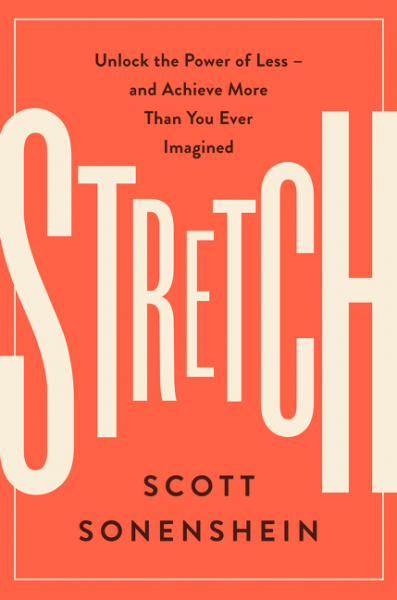I finished Stretch: Unlock the Power of Less - and Achieve Than You Ever Imagined by Scott Sonenshein a few weeks ago, and have had the ideas rolling around in my head since then. I really like the overall premise of the book - and I found that it nicely connects to the ideas of Theory of Constraints and process improvement in general.
The basic concept is that there are 10 types of people, those who understand binary and those don't. ...
Sorry... I love that joke.
The basic idea is that there are two types of people: Chasers and Stretchers. Chasers are always looking outside and up - How can I get more (people, stuff, power)? How do I compare to those around me? When Chasers run into a block or barrier, they tend to acquire their way through without considering what they have already. Stretchers, on the other hand, look at what they have and wonder what else they can do with it - How can I reach my goals with what is here now? They have a psychological ownership of their resources and have an an innate sense of how to draw more from these resources, whether this is equipment, relationships, people, or anything else. Barriers, for a Stretcher, are simply a reason to look at the situation from a different angle. Obviously, given the title of the book, it is the Stretchers that Sonenshein suggests we follow. In particular, he sees a world of Chasers and is trying to nudge people in the other direction.
I had a strong connection right away with the book. The description of stretchers and their mindset is very much aligned with the Theory of Constraints mindset and way of thinking about systems. After establishing the goal, the first question is what limits us from achieving more of that goal - what is the constraint? Then, instead of asking how to get more of the constraint, the next question is how do we get more out of that constraint - how do we want to exploit it to its utmost. How do we want the rest of the organization to respond to the constraint? If the constraint limits the flow of the entire business, nothing else should get in the way or put up artificial barriers to that flow. The rest of the business must subordinate to that constraint (and decisions around how to deal with it). It is only when the system is humming along that we should think about expanding or elevating the constraint, assuming it is still needed. And then, of course, always check if the constraint has moved. This is the TOC Five Focusing Steps that are articulated in Eli Goldratt's The Goal and many other TOC materials:
- Identify the system's constraint.
- Decide how to exploit the constraint.
- Subordinate everything else to the above decisions.
- Elevate the constraint.
- If, in a previous step, the constraint has been broken, go back to Step 1. DON'T LET INERTIA BECOME THE CONSTRAINT.
Once the basic framing of Chase / Stretch was established, Sonenshein demonstrates how the idea applies in many different realms and with plenty of stories. These application areas were also where the book slowed down for me. I appreciated the examples and conversation, but the deep connection for me came in the first chapters. Here are some highlights.
- Experts can get stuck in their own worlds, if they aren't able to bring experiences outside of their narrow expertise to bear. And yet, we seemingly reward and encourage experts for diving further and further into their knowledge area. Sonenshein talks about the multi-context rule - having varied experience to bring to bear in order to overcome challenges.
- Planning versus acting. This is a classic challenge in project management: achieve the need for speed by doing something or achieve the need for accuracy (or cost effectiveness) by making detailed plans. The solution requires thinking about things differently. Does detailed planning truly give us accuracy? Does "do something" really grant speed? Find a way of operating that will give both, and you dissolve this seeming conflict. Plan where we have more certainly. Act-and-check where there is more uncertainty.
- Expectations. If we expect "resistance to change," we will likely get it. If we expect a project to go well, it tends to do so. Our expectations color all sorts of things about our interactions with the world - so plan positive seeds, instead of negative ones.
The flavor of the book for me is set in the first pages: Chasing leaves people always looking for more and always frustrated with where they are now. Stretching gives people a clearer path through and enables enjoyment of the situation today, even if it is challenging.
